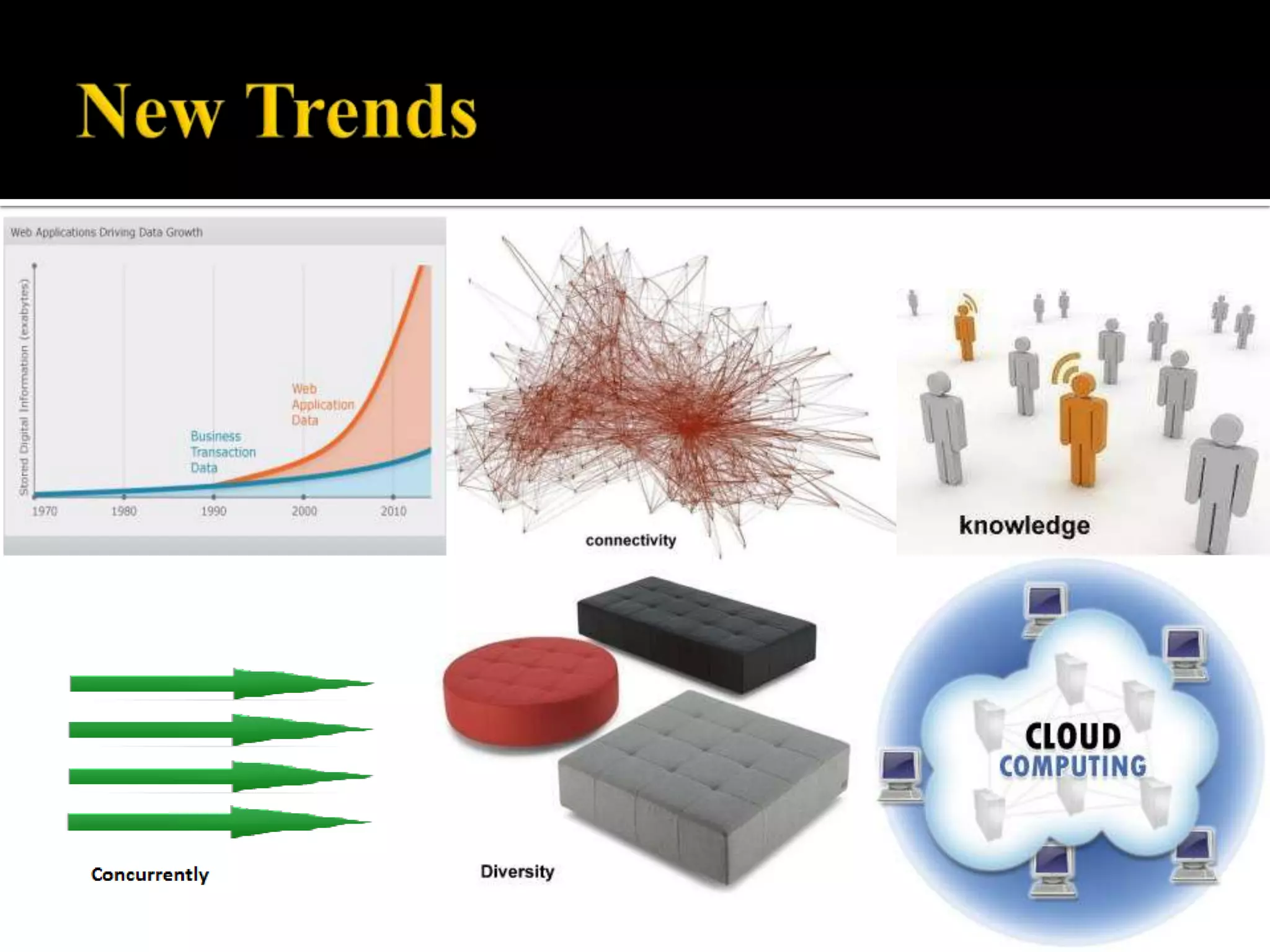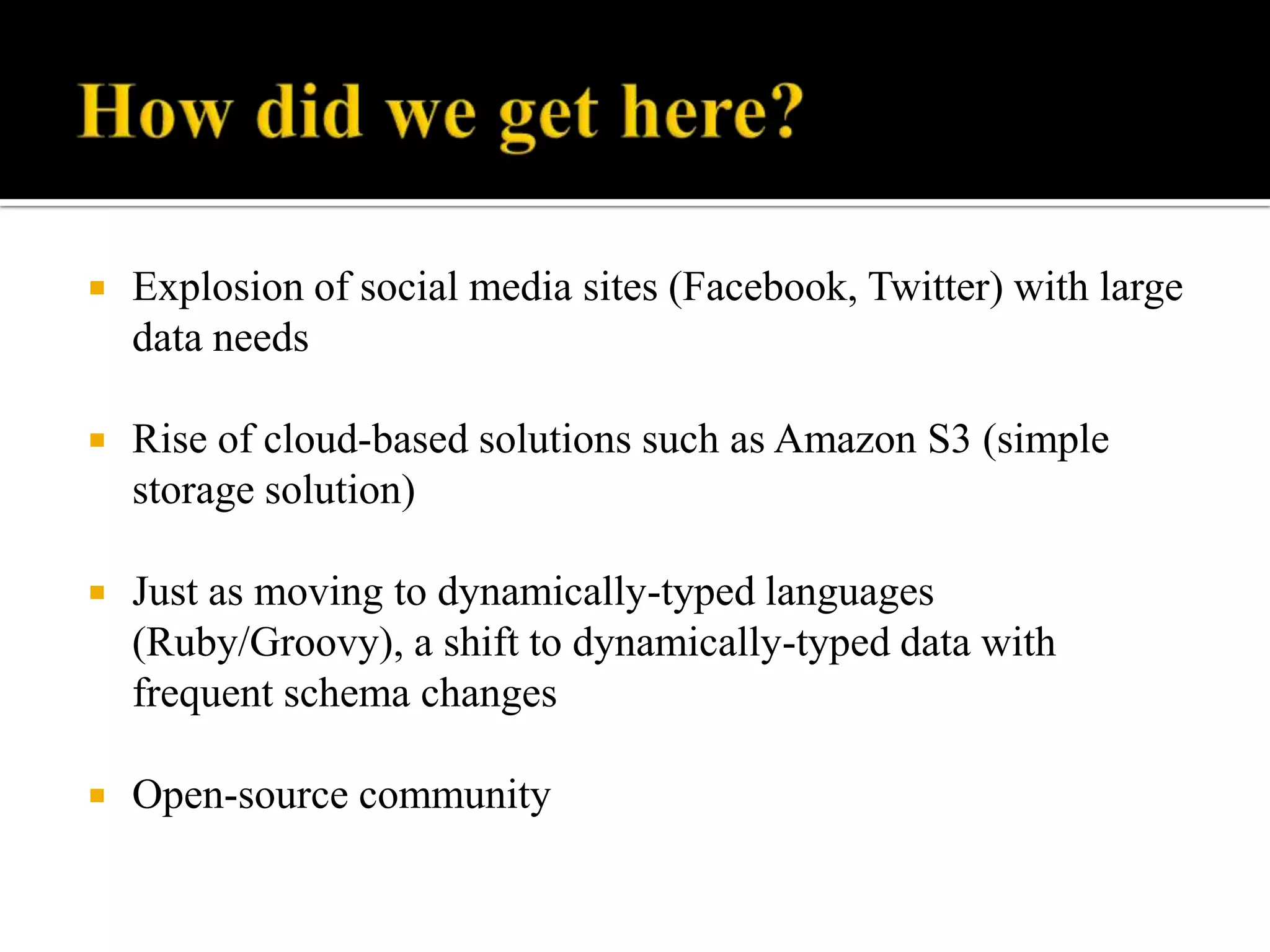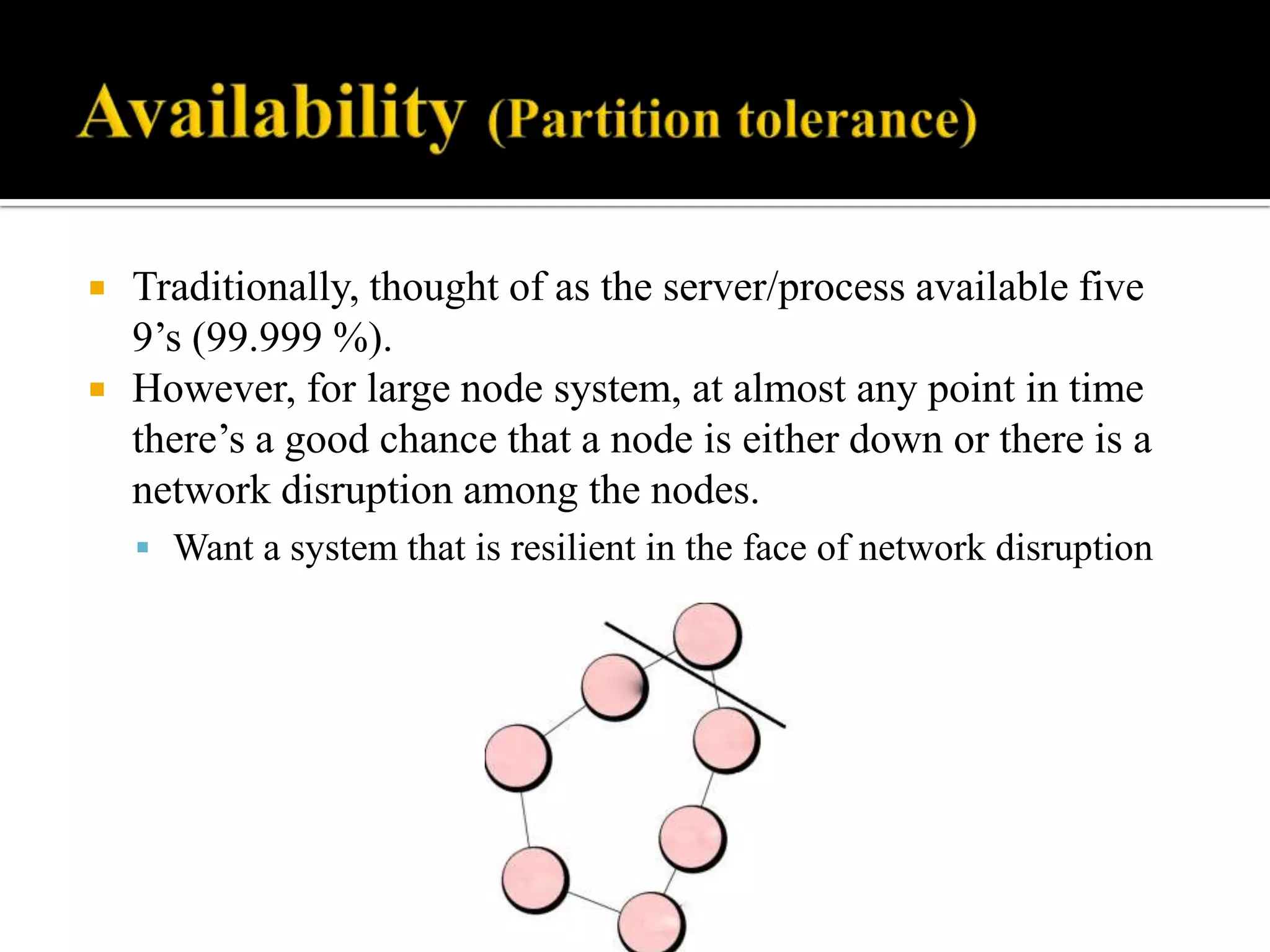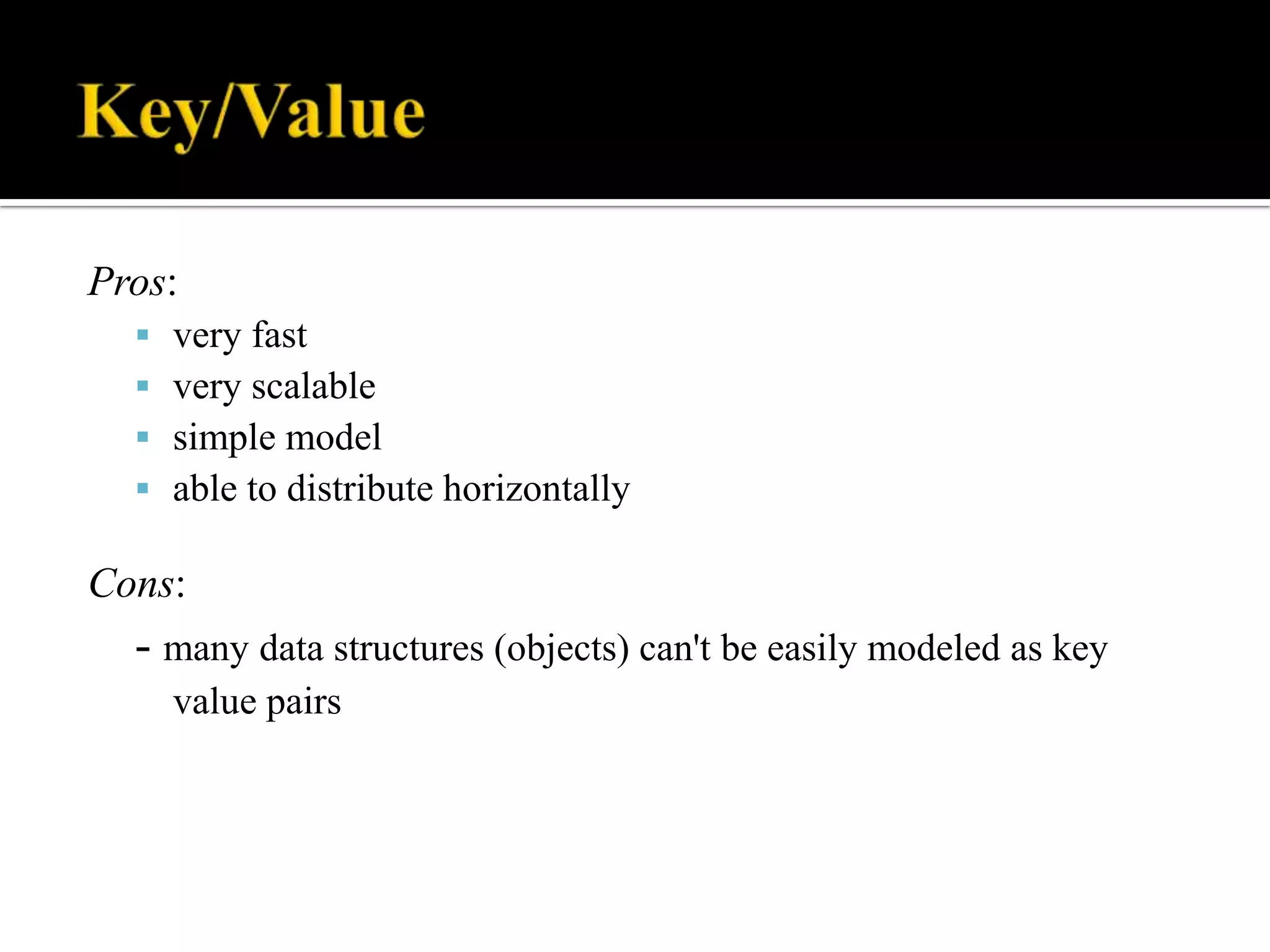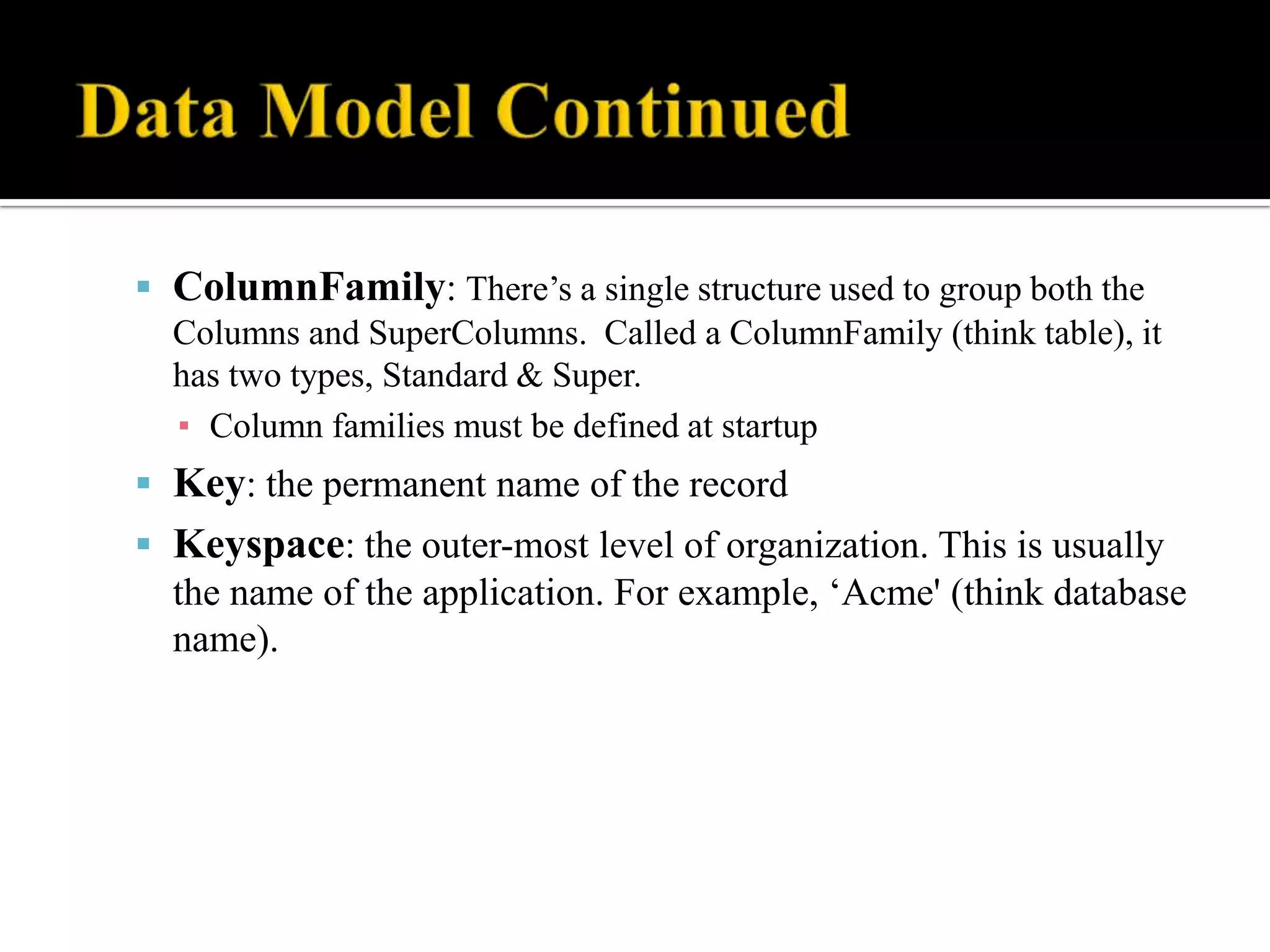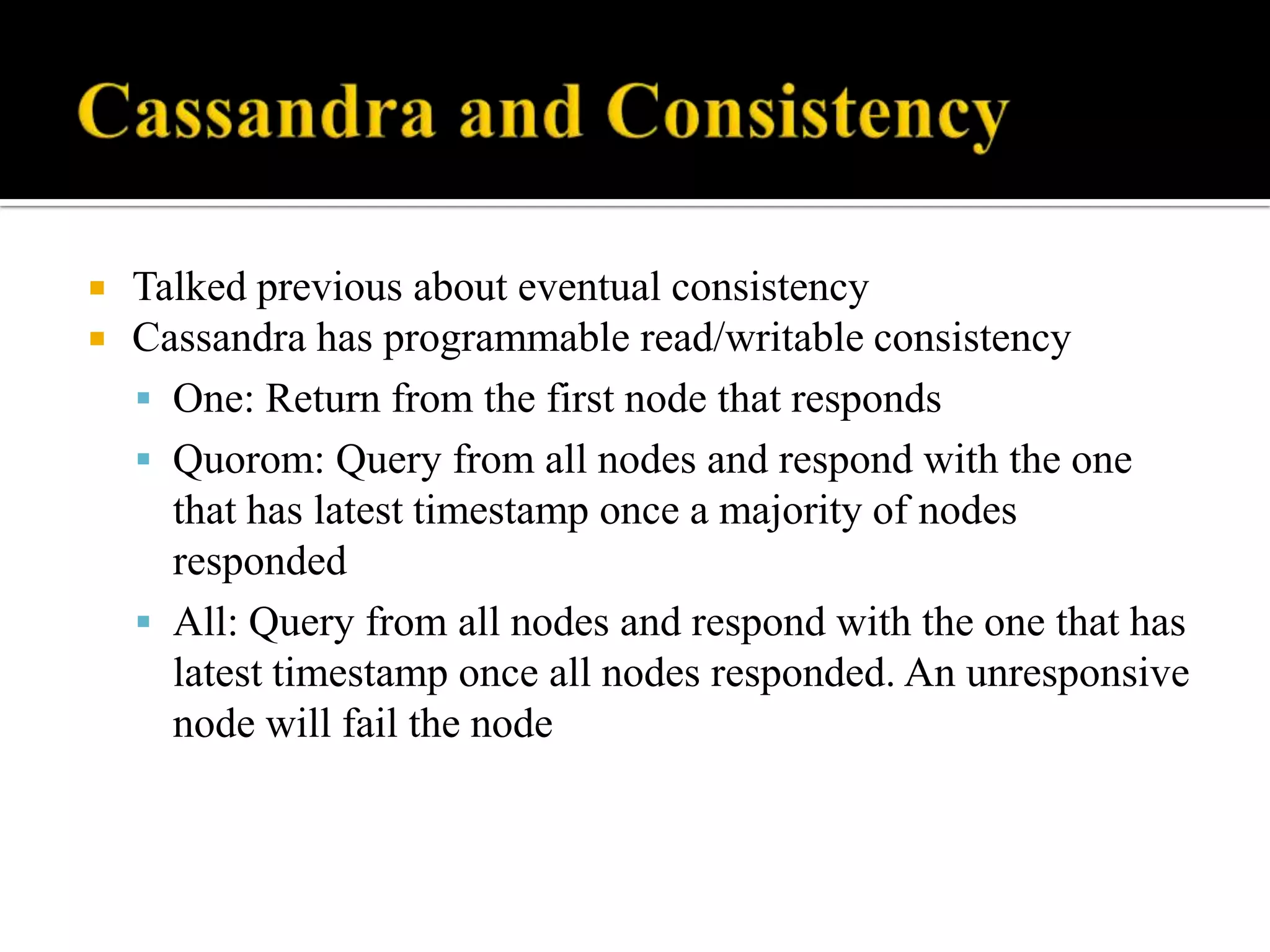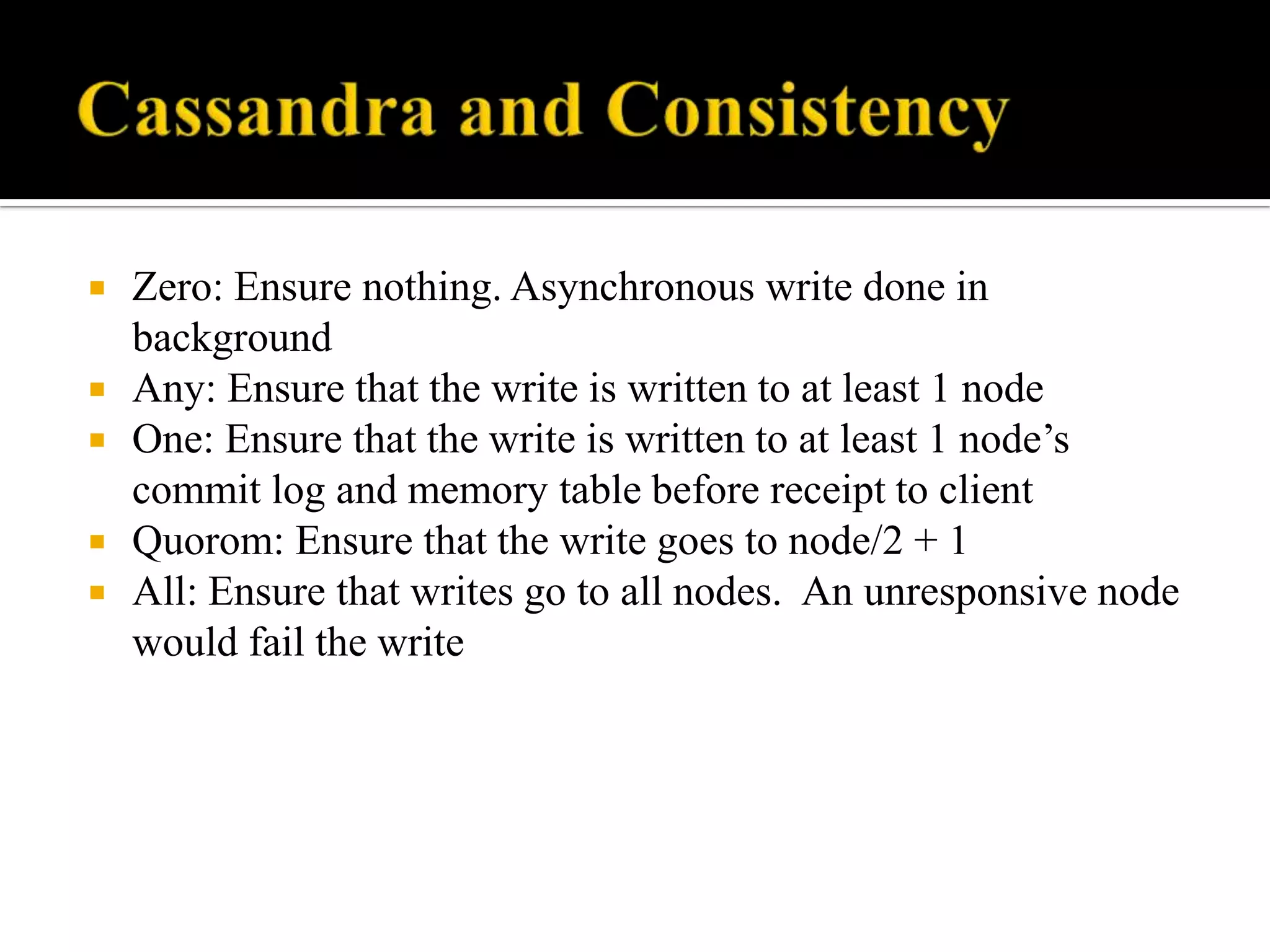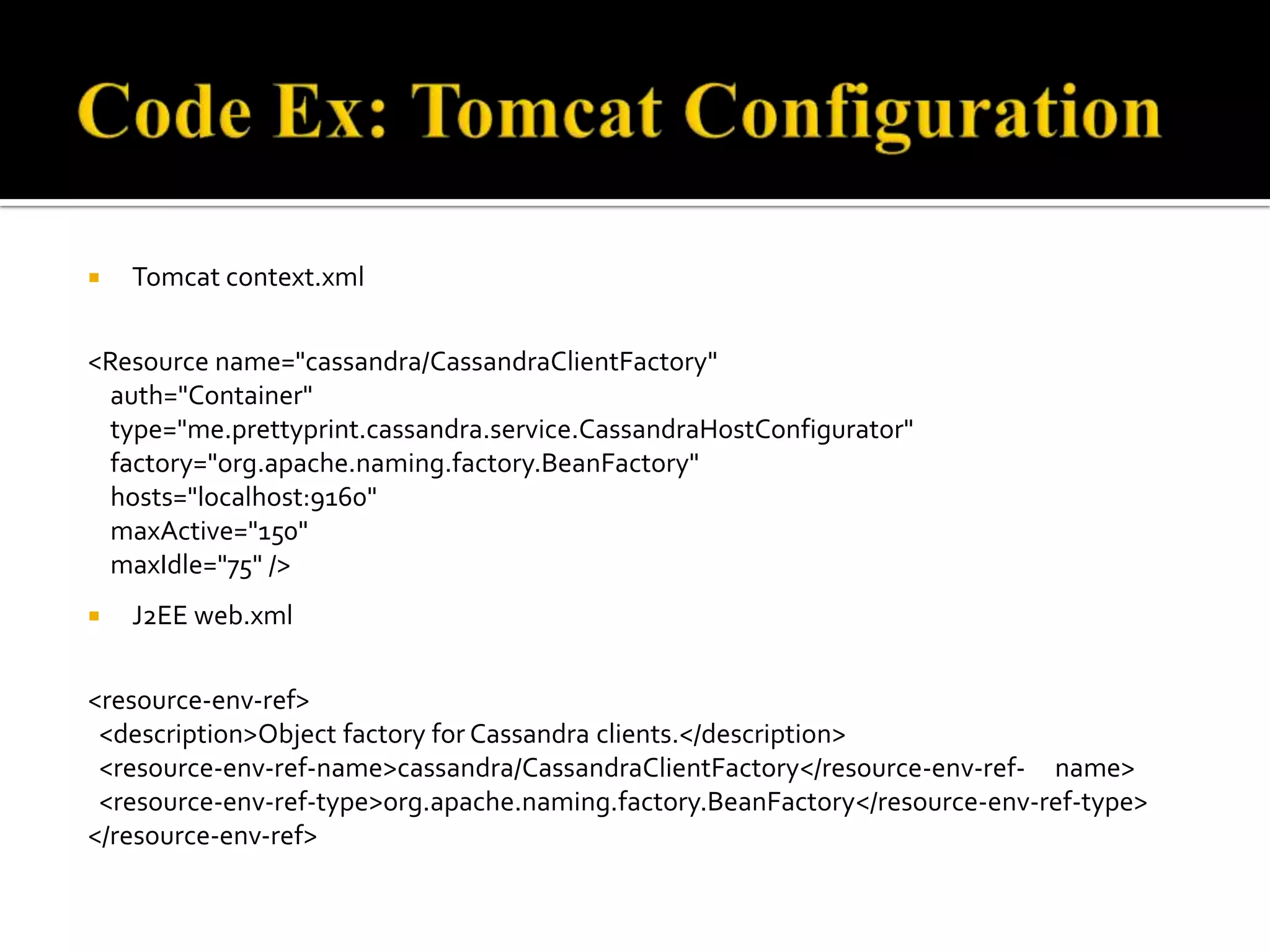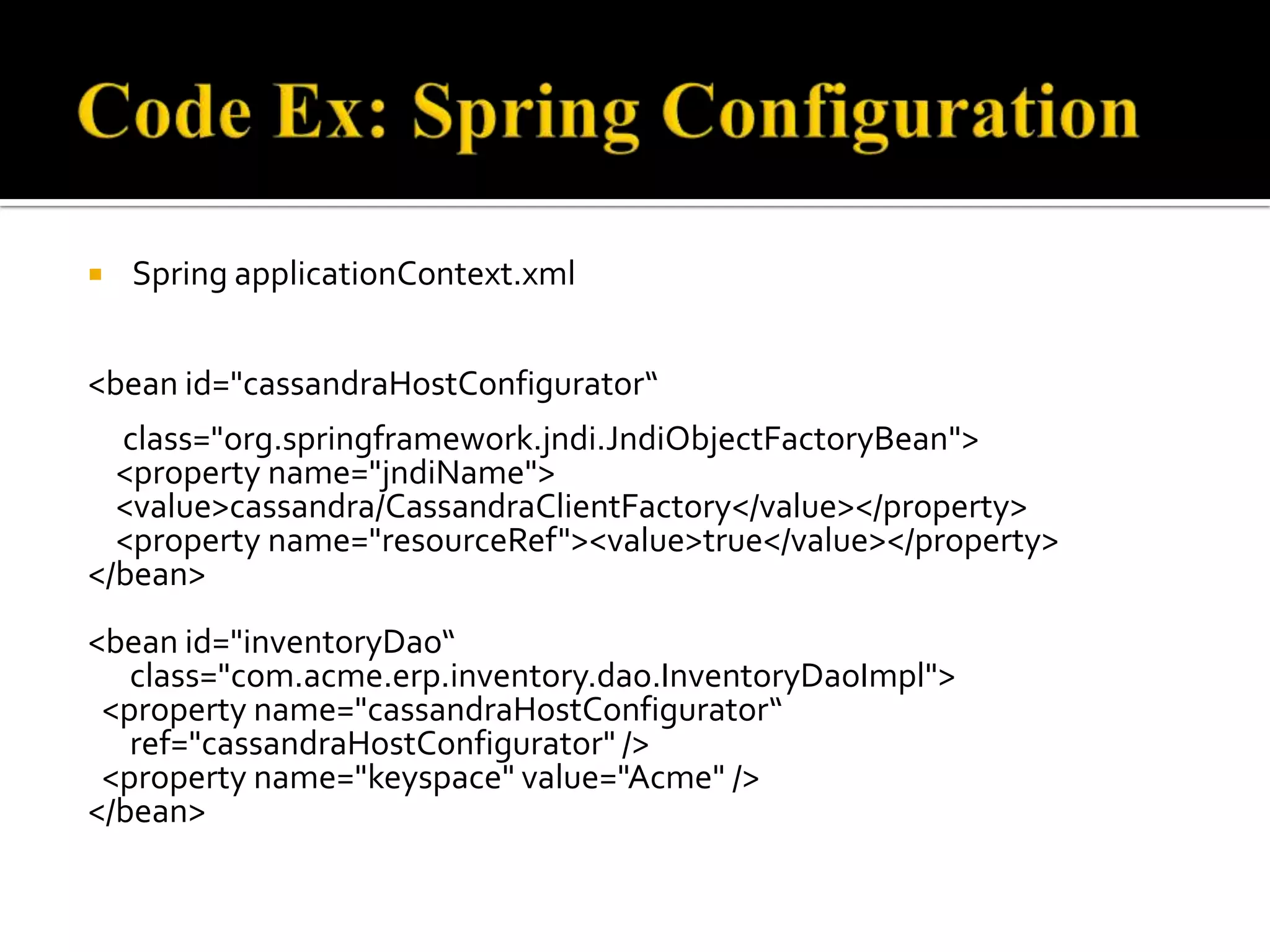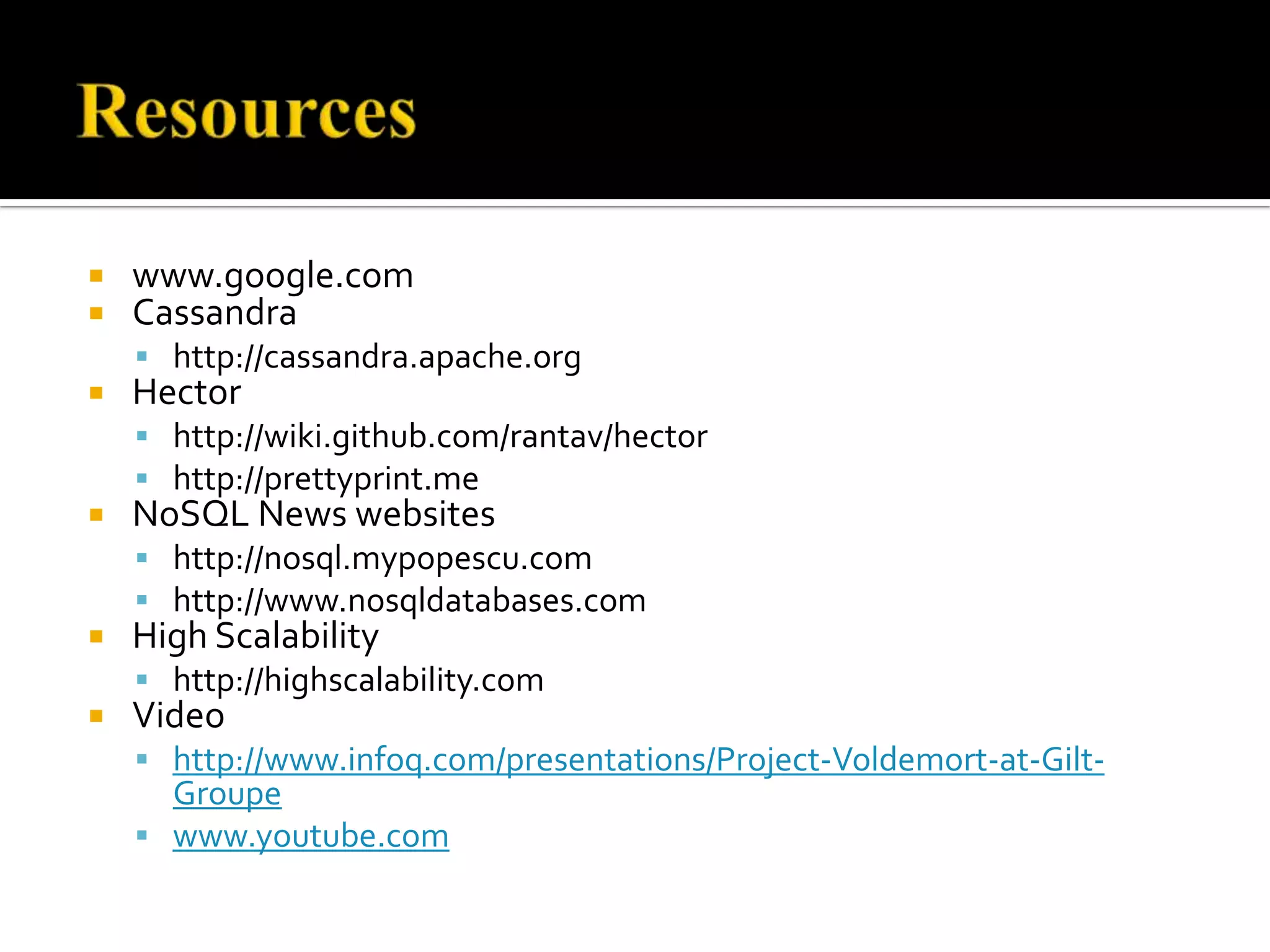The document provides a comprehensive overview of NoSQL databases, explaining their purpose as non-relational data storage systems that do not require fixed schemas or ACID properties. It discusses the CAP theorem, various types of NoSQL databases (such as key/value and schema-less types), and their pros and cons, emphasizing scalability and performance. Additionally, it covers the future trends and examples of NoSQL implementations in response to increasing data needs from social media and cloud-based solutions.


